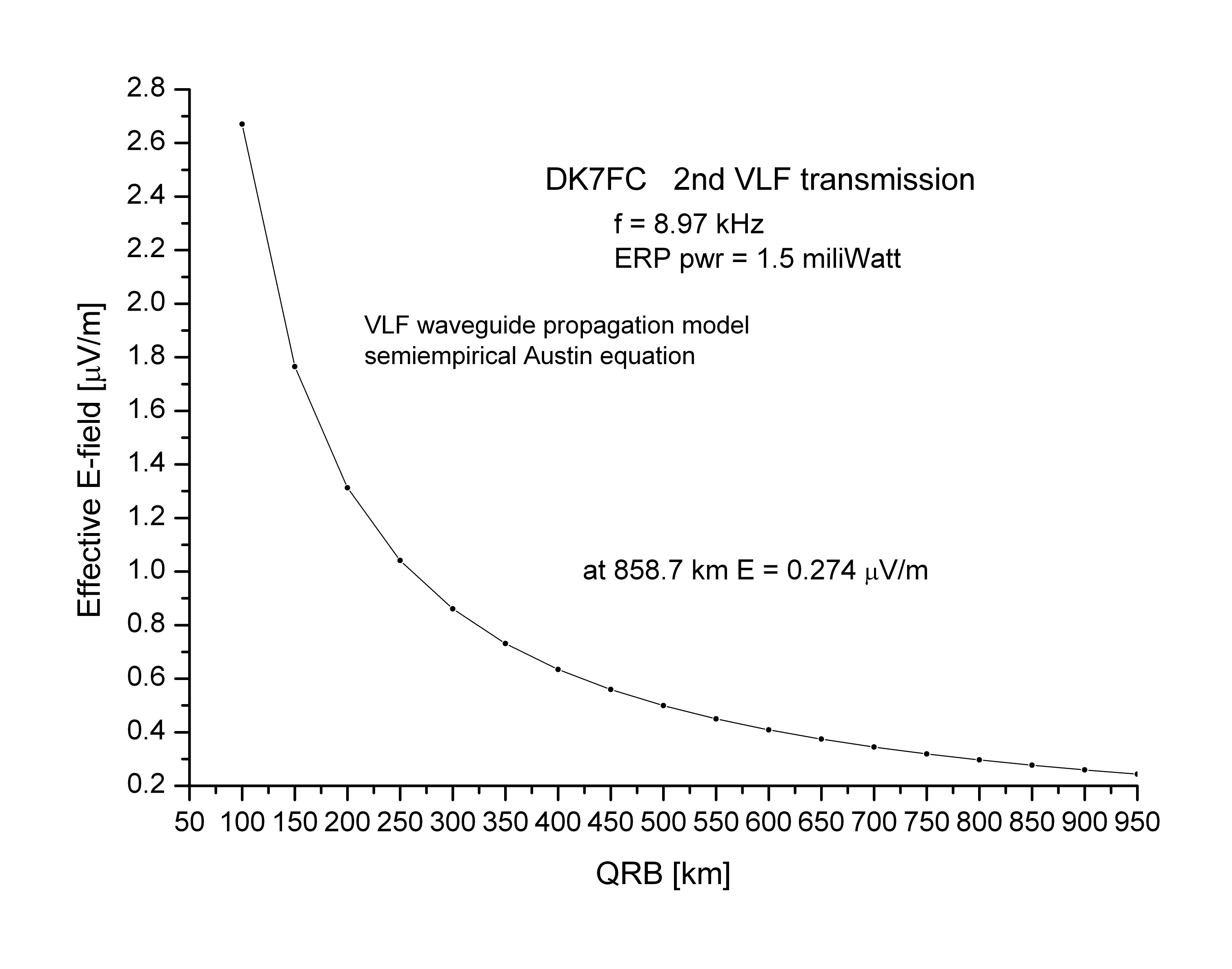Paul Nicholson wrote:
Alexander RA9MB wrote:
> Fore large distanses i expect behaviour E ~ 1/sqrt(d).
This would be the most straightforward explanation
for the high signal strength.
The signal expands with 1/r^2 power density and 1/r field
strength until it is constrained by the Earth-ionosphere
cavity, at say r = 100km. Thereafter, expansion is
1/r power density and 1/sqrt(r) field strength.
For long distances, we can just assume 1/sqrt(r) field
strength.
We have then B = sqrt( 9.5e-21 * ERP/r) for a daytime
D-layer at a height of 70km.
For 1mW ERP over 850km, that gives 3.3fT which is a much
better estimate than the 1/r^2. With multi-path interference,
it could vary between zero and twice that figure.
For conservation of energy, it cannot be higher than
that, so that gives an upper bound.
Then there must be the exponential factor for attenuation...
--
Paul Nicholson
--
Dear Paul, Alexander, Markus , Stefan & other "Dreamers"... :)
First of all, my congratulations to all of you for remarkable experiments
at VLF. I read all your posts with a great interest and find it
very, very useful
at least because it has opened some theoretical discussions upon
different models of radio waves
propagation at VLF frequencies.. In the light of the above
discussions i think, one can mention
the semiempirical Austin equation describing E field dependence upon
distance based on the idea
of a spatial waveguide: earth-ionosphere.
Based on Stefan, DK7FC 2nd TX transmissions and his reports about
antenna current of 480mA and
100m length of his kite antenna the estimated erp pwr at 8.97 kHz is
abt 1.5 miliWatt
and i took this value for the further calculations of E =E(r)
function. It is plotted in the attached picture.
Here, i only recall that at the 858.7 km distance ( Paul, Stefan) my
calculated effective field strength is 0.274 microVolts/m
the Austin eqn can be described here as a product of 3 factors: F1*F2*F3
F1 is simply a piece of a fundamental electrodynamics i.e. E -field
as a function of r in a free space
(i described it in more detail in my post sent a few weeks ago ,
concerning ionospheric prop ,wspr, 600m band etc.. )
F2 is defined as sqrt(alfa/sin(alfa)) where alfa (in radians) is
defined as r/R ; R is earth radius
F3 is defined as exp(-0.0014*r/lambda**0.6) where r and lambda are
expressed in km
As Markus has pointed out Paul recording was 0.93 microV/m ( taken
from E = cB, B=3.1 femtoTesla)
Markus estimate upon E as 1/r dependence gives value 0.251 mcroV/m so
it is almost the same as mine in this present calculations
while both ( 0.274, 0.251) are much lower than equivalent E-field of
calibrated B measurement.
my next step was to quickly ( and naively) calculate pure ionospheric
prop. this time i got field strength of 0.595 microVolt/m
( i assumed that D layer height is/was 75 km)
i have a feeling that Austin eqn is ok( as a crude approxim.) for
longer, say, 5000 km distances
on shorter ones the prop is much more complicated being a mixture of
ionospheric , surface(ground) modes etc..
yours, Piotr, sq7mpj
qth: Lodz /jo91rs/
p.s. at the city location i must forget about looking for Stefan TX'ed
K's etc...but , of course, i immediately did
almost the same what Rik did i.e. i took 2 ferrite antennae and
constructed "TX" and "RX" stns - got full success
at qrb = 0.005 km at 8.97 khz :)

|

